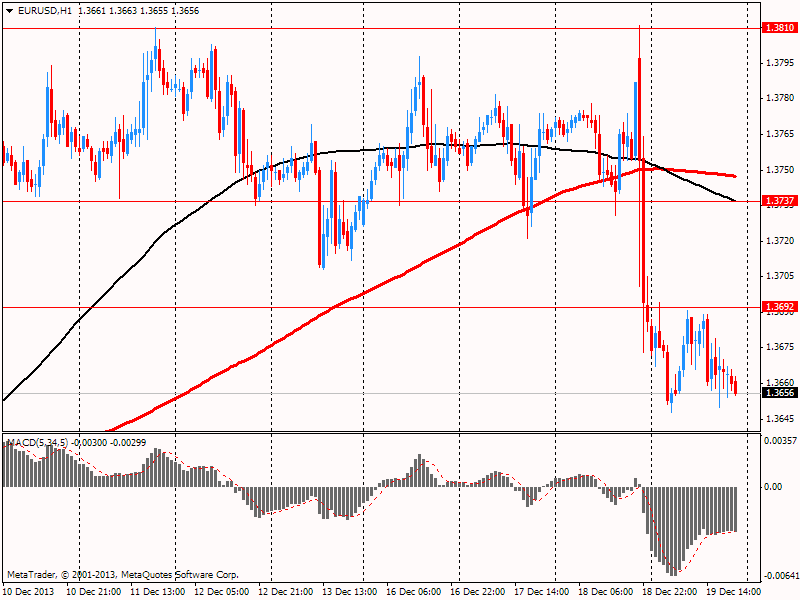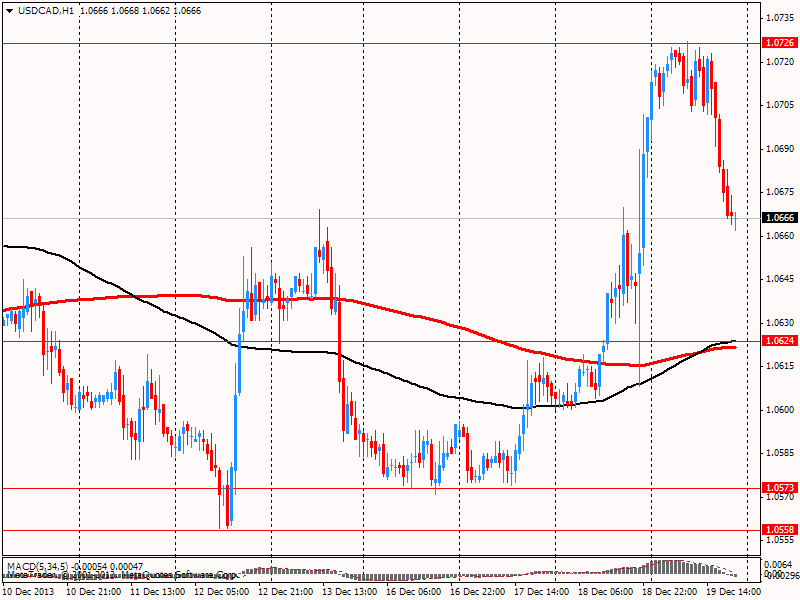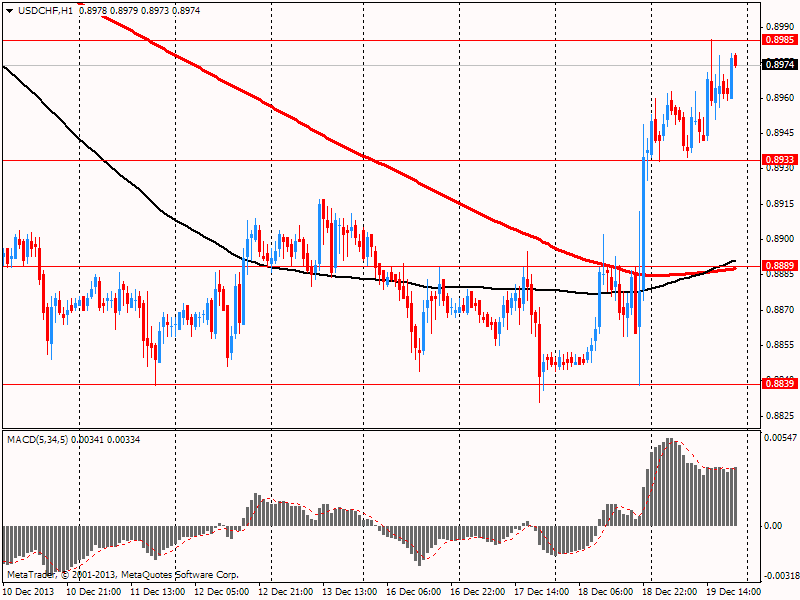- American focus : the euro fell slightly against the U.S. dollar
Market news
American focus : the euro fell slightly against the U.S. dollar
Rate of the euro traded in a range against the U.S. dollar, while demonstrating a slight decrease . Note that after adjusting Eurocurrency yesterday dollar growth caused by the decision to cut the Fed asset purchases by $ 10 billion to $ 75 billion a month , and an increase in the economic outlook for the United States . So , after a meeting of 17-18 December the Fed has reduced its quantitative easing program and kept the target range of the base interest rate of zero to 0.25 % per annum. Fed from January 2014 intends to reduce purchases of government bonds to $ 45 billion to $ 40 billion a month , mortgage-backed securities - from $ 40 billion to $ 35 billion a month . At the same time the Fed is ready to continue the reduction of future meetings , if justified its macroeconomic forecasts . The Federal Open Market Committee, stressed that the base rate will remain in the current range for a long time after the decline in the unemployment rate to less than 6.5% , especially in the case of continued low inflation .
As for economic data , today appreciable effect on the course of trading , they did not have .
The Canadian dollar rose sharply against the dollar , helped by the weak U.S. reports . The first is to provide data on the number of applications for unemployment benefits . In the Department of Labor reported that the number of people filing for first time applications for unemployment benefits rose by 10,000 and totaled a seasonally adjusted 379,000 in the week ended Dec. 14 , said Thursday . This is the highest level since March and well above 336,000 new claims economists expected . The number of applications from the previous week was revised up to 369,000 . New applications jumped by 74,000 in the past two weeks after moving to six-year lows in late November. The four-week moving average of claims, which smooths the volatile weekly data , rose by 13,250 to 343,500 .
Not pleased as data on the housing market. As it became known , existing home sales fell by 4.3% compared with the previous month to a seasonally adjusted annual rate of 4.90 million home sales fell 1.2 % compared with a year earlier, the first time in 29 months this index decreased compared to the same period last year. Economists had forecast a decline of 2.0% from October to November to an annual rate of 5.04 million .
The Swiss franc fell against the U.S. dollar, which has been associated with the release of unexpectedly weak data on Switzerland. As it became known , the trade surplus narrowed in November, Switzerland , contrary to expectations of improvement. The trade surplus fell to 2112 million Swiss francs from the downwardly revised 2282 million Swiss francs in October. Economists had forecast a surplus of 2.57 billion Swiss francs.
Exports rose for the second month in a row in real terms , after rising by 1.2 percent year on year , after growth of 0.3 percent in the previous month . Imports grew by 1.6 per cent per annum , after falling 2.7 percent in October. Jewelery exports hit a record high in November , while exports of chemicals and pharmaceuticals showed the biggest decline in two years.


